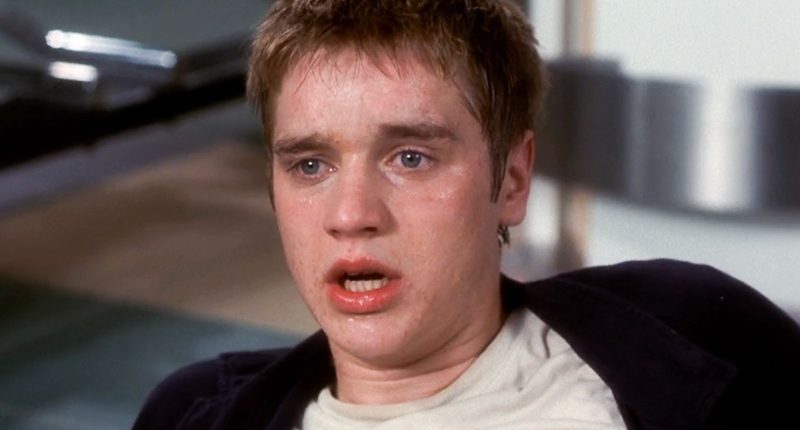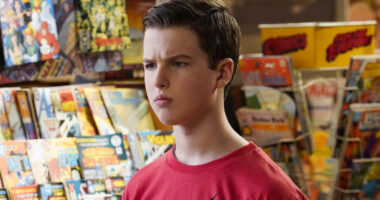Share this @internewscast.com
“Final Destination” stands out as one of the top horror series of the 21st century. This is impressive given the often similar nature of each film in the series, but the plots are so engaging that repetition doesn’t detract from their appeal. Each movie begins with a group of people on the brink of a dangerous situation. One person has a premonition of the impending disaster and manages to avoid it with their companions. However, they are not entirely safe as Death pursues them one by one, resulting in some unforgettable fatalities.
The true draw of any “Final Destination” film lies in witnessing the outlandishly creative ways characters meet their end. It’s as if Death has a twisted sense of humor, orchestrating elaborate scenarios where multiple elements could lead to a character’s demise, requiring the audience to pay close attention to guess how it will happen. The films excel in highlighting minor details, making multiple viewings rewarding as audiences might catch something new each time. We took a fresh look at the entire series, and here’s what stood out to us.
Lots of characters are named after horror icons
The central family in the latest installment, “Final Destination: Bloodlines” from 2025, is the Campbells. While it’s a fairly common surname, horror fans might immediately think of Bruce Campbell from the “Evil Dead” series. Coincidence? After revisiting the “Final Destination” series, it seems unlikely. The filmmakers were evidently inspired by horror legends from the start, as seen in the character names throughout the first movie.
Devon Sawa’s Alex Browning, for example, is seemingly named after director Tod Browning, who made 1931’s “Dracula.” Billy Hitchcock (Seann William Scott) is, of course, named after Alfred Hitchcock of “Psycho” and “Vertigo” fame. Larry Murnau (Forbes Angus) appears to get his name from “Nosferatu” filmmaker Friedrich Wilhelm Murnau, and Valerie Lewton (Kristen Cloke) shares a name with producer Val Lewton, who was behind 1942’s “Cat People,” one of the best horror films of that decade.
“Cat People” contains what is basically the first jump scare ever, with a woman being startled by a bus. The “Final Destination” series loves its buses — the first movie has a scene where Terry Chaney (Amanda Detmer) gets killed by stepping in front of a moving bus, for example. It feels like a natural progression of the original “Cat People” scene, with someone actually getting hit by the vehicle this time. All of this shows how the creators of the “Final Destination” franchise have really done their homework in studying past scares.
Numbers are important in the Final Destination films
Some believe angel numbers can be signs from a divine power. The jury’s out on whether that’s the case in the real world, but in the “Final Destination” universe, it’d be wise to pay attention to all of the recurring numbers that crop up. The most significant is “180,” starting with Alex’s alarm clock reading “1:80.” The flight he and his classmates are about to get on is Volée Airlines Flight 180, and the remaining characters are later seen at Le Cafe Miro 81 when the neon sign falls down on Carter Horton (Kerr Smith) — when it’s broken and upside-down, the “18” get matched up with the “O,” spelling out “180.”
A combination of one, eight, and zero pops up several times throughout the franchise, like in “Final Destination 2” when Kat Jennings (Keegan Connor Tracy) gets into a car crash at the 180 Mile Marker. It seems as though “180” is a sign that Death is on the way. It also feels like a subtle nod to how many deaths throughout the franchise are surprises, doing a complete 180 of the audience’s expectations. For example, “Final Destination 5” has a scene where Olivia (Jacqueline MacInnes Wood) gets LASIK eye surgery that begins burning her eye. You think that’s how she’s going to die, but she ends up tripping out of a window, pulling a 180 on how we thought that was going to play out.
The number 23 also comes up regularly, like Clear Rivers (Ali Larter) sitting in Row 23 in the first film, and “Final Destination 2” has its big pile-up scene involving the logging truck occurring on Route 23. There’s also a road sign in the second film that states the next service station is in 23 miles. The reasoning behind the use of 23 remains unknown, but it definitely builds tension whenever you spot it on screen.
There are lots of needle drops
Death apparently has a diabolical sense of humor given the sheer number of ironic needle drops that permeate the “Final Destination” films. These tend to be diegetic music cues where characters within the scene can hear the song, almost as though Death is signaling what it’s about to do. One of the most famous occurs in the first “Final Destination” when John Denver’s “Rocky Mountain High” plays over some speakers. The song reminds the characters that Denver himself died in an aircraft accident (just three years before the film came out), and this particular song has the lyric, “I’ve seen it rainin’ fire in the sky.” When the plane explodes after take-off, it does look like fire’s raining down.
The “Final Destination” franchise has never passed up a chance to add a twisted song to the mix. In “The Final Destination” (aka “Final Destination 4”), the very racist Carter Daniels (Justin Welborn) gets dragged and burned alive by a tow truck while “Why Can’t We Be Friends” by “War” plays, an appropriate track for someone who refused to be friends with people from other races.
“Final Destination: Bloodlines” opens with two needle drops. When Iris (Brec Bassinger) and Paul (Max Lloyd-Jones) arrive at Skyview Restaurant, Johnny Cash’s “Ring of Fire” plays on the radio, which soon becomes a reality once an explosion occurs inside the circular eatery, turning it into a literal ring of fire. Later, the radio plays “Raindrops Keep Falling on My Head” by B.J. Thomas right when people fall from the sky (raining down) after the glass floor breaks in the restaurant.
Final Destination 2 opens with a goof
“Final Destination 2” takes place one year after the Flight 180 explosion. To get the audience back up to speed, the film opens with a newscaster talking about the one-year anniversary, and he states, “It’s a disaster that’s affected many, none more so than Mt. Abraham High School, which lost 40 students and four faculty members in the crash.” The problem with this is that the numbers are off. After Alex’s premonition, six students and teacher Valerie Lewton get off the plane. That means there would’ve only been 34 students and three faculty members who were on the plane when it exploded mid-air.
It’s possible the newscaster got the information wrong because Alex and everyone else still boarded the plane, so the airline’s records might have shown that 44 people total from Mt. Abraham boarded even though some got off. However, the newscaster then discusses how the students who avoided the catastrophe died in increasingly convoluted ways in the days that followed the incident. It feels like he (or the screenwriters) probably should’ve done a bit more research to get the facts straight.
Death’s rules differ from film to film
Every “Final Destination” movie has roughly the same outline: Someone has a premonition of a disaster, they save themselves as well as the people in their immediate vicinity, and Death kills them off in the order they would’ve died had the vision not intervened. That makes enough sense, and it was established pretty clearly in the first “Final Destination.” But, for some reason, the rules change from film to film with no real reason given. For example, “Final Destination 2” has the Route 23 vision, but people die in the reverse order they would’ve if everyone had gotten on the highway like they wanted. There’s no explanation for why Death is working in reverse this time around.
There’s also the matter of Death killing people who shouldn’t have died in the first place. “Final Destination 5” has Sam Lawton (Nicholas D’Agosto) receive a vision where a bridge collapses, and many people die. However, Molly Harper (Emma Bell) doesn’t die in the vision, which means she shouldn’t have been on Death’s list at all, right? Well, she still winds up on Flight 180 at the end of “Final Destination 5,” which is also the beginning of 2000’s “Final Destination.” Granted, there were a bunch of people on that plane, so the simplest explanation to all of this is that Death is simply a big jerk with a flair for the dramatic.
The way some people die gets foreshadowed
We’ve already gone over the various ways Death broadcasts that it’s going to kill someone, whether it’s the use of numbers or an ironic song. Sometimes, Death gets a little more subtle with its foreshadowing, with some examples taking multiple movies to pay off.
The best example of the “Final Destination” movies using foreshadowing comes in the third one. Wendy Christensen (Mary Elizabeth Winstead) takes photos of her classmates when they’re at an amusement park prior to them getting on a rollercoaster. However, Wendy has her fateful vision, preventing any of them from getting on. But it seems like Death wants to have a bit of fun, as it kills everyone who survived in manners reminiscent of how they were photographed. For instance, the picture of Ashley (Chelan Simmons) and Ashlyn (Crystal Lowe) has an orange tint to it, and they die burning alive in tanning beds. But that’s child’s play compared to what transpired in “Final Destination 2.”
During the dentist office scene in the second film, a boy looks at a fish tank where one of the fish gets caught in the filter. It’s eerily reminiscent of a death that occurs in “Final Destination 4,” in which Hunt (Nick Zano) gets disemboweled by a pool filter. It’s unclear if this was intentional foreshadowing, but seeing as how Eric Bress was a writer on both movies, it’s possible he had his mind on that brutal death for a while.
Real machines don’t work the way they do in Final Destination movies
In order to fully enjoy the “Final Destination” movies, you have to overlook the fact that many people have met their ends via malfunctioning technology in ways that wouldn’t happen in real life. Remember the aforementioned “Final Destination 3” tanning bed scene? It shouldn’t come as a surprise to learn that real-life tanning beds have emergency shut-off switches in case the top gets locked shut. Of course they have that. Tanning beds would be utterly dangerous otherwise.
Another gruesome death occurs in “Final Destination 5” during Olivia’s LASIK eye surgery. In the movie, a power surge causes the LASIK device to malfunction and burn her eye, which isn’t possible since such devices come with backup power sources to ensure that doesn’t happen. There’s even an article on the LASIK website dedicated to picking apart the scene. It states: “The truth is, LASIK is an extremely safe procedure with a very low complication rate. The risks involved are minor, and any potential side effects are generally mild and temporary. The idea that something could go fatally wrong during LASIK is pure fiction.”
“Final Destination: Bloodlines” has a scene where an MRI machine malfunctions and becomes far more magnetic than is realistically possible, leading to another gruesome death scene. It was quickly debunked by experts, who expressed concern that the scene would put people off getting MRIs. “What the movie shows about the MRI is contrived, much of it is incorrect or technically impossible,” MRI safety expert Tobias Gilk told Health Imaging. “I would hope that every potential MRI patient who sees this disregards it as a piece of complete fiction.”
Final Destination 3 has a deadly subway map
“Final Destination 3” ends with Wendy getting on subway car 081, an anagram of 180, so you know something bad is about to happen. The following is heard over the loudspeaker: “This is Booth Street. Next stop is Oswald. End of the line.” Most viewers may latch onto the “End of the line” portion of that considering the subway is about to go off the rails, killing everyone onboard, but it’s also worth noting the street names of Booth and Oswald. These appear to be named after two infamous presidential assassins — John Wilkes Booth and Lee Harvey Oswald. However, that isn’t the only murderous Easter egg hiding in that scene.
When Wendy reviews the subway map, you can briefly see that there are several stops named after infamous killers. For example, there’s a station called McVeigh, which seemingly stems from Timothy McVeigh, the man behind the 1995 Oklahoma City bombing. Some of them aren’t even that difficult to figure out: One is called Bundy after well-known serial killer Ted Bundy, and there’s another called Gein after the equally infamous Ed Gein. One is called Jim Jones, and there’s another called the Jonestown Transfer, both nods to the Jonestown massacre with Jones as the cult leader.
This is a pretty odd city considering all the stops have such sinister connotations. But, given everything else we know about the “Final Destination” universe, it’s very much in line with how Death is everywhere and has a sick, twisted sense of humor.
Death loves making use of water
Aside from malfunctioning electrical devices, it would appear Death is a big fan of using water and various other liquids (often flammable) to take out its victims. This goes back to the first “Final Destination” when Tod Waggner (Chad E. Donella) slips on water via an overflowing toilet and gets a clothesline wrapped around his neck. “Final Destination 2” sees Kimberly Corman (A.J. Cook) drowning, but she gets resuscitated and cheats death. A similar drowning occurs in “Final Destination: Bloodlines” with Stefani Reyes (Kaitlyn Santa Juana). Unfortunately, she doesn’t make it out alive by the end.
“Final Destination 4” has Janet Cunningham (Haley Webb) nearly dying in a car wash as well as the infamous pool scene. Jonathan Groves (Jackson Walker) has several water-related incidents in that movie, as he’s almost electrocuted by water and electrical devices but then is ultimately done in by a falling bathtub. Even when water isn’t directly related, it can sometimes make other things go awry, like the fish getting caught in the tank filter in “Final Destination 2,” which causes some water to spill out, shorting out the electrical equipment and turning on the nitrous gas in the room that Tim Carpenter (James Kirk) is in.
Water and other liquids are pretty malleable as death-related devices, but there could be a symbolic meaning to this: Water is essential to life, and in all of these cases, it’s been warped to be a bringer of death.
Horseshoes are everywhere
If you look carefully, you’ll find horseshoes scattered throughout the “Final Destination” films, which are typically viewed as symbols of good luck. However, when a horseshoe is turned upside-down, that’s typically seen as bad luck, with all of the luck spilling out of the horseshoe’s opening. In “Final Destination 2,” Evan Lewis (David Paetkau) sports a horseshoe ring and this could probably be seen as pretty lucky, considering he just won the lottery. But his luck runs out when that fire escape ladder comes down on him, one of the best kills in the “Final Destination” franchise.
Carter from “Final Destination 4” has an upside-down horseshoe hanging from his car’s rearview mirror, which falls, turning on the radio and causing the truck to turn on by itself. That doesn’t mean horseshoes are all bad news in the franchise, though. “Final Destination: Bloodlines” has a neon horseshoe in the tattoo shop where Erik (Richard Harmon) almost gets killed. He turns out fine in the end, and we learn later that he’s not part of Death’s list. The fact the horseshoe was right-side up indicates that this is, in fact, a lucky symbol that’s going to save Erik.
This trope goes beyond horseshoes — the “Final Destination” series loves turning lucky symbols on their heads. Hunt keeps a lucky penny on his person in “Final Destination 4” (his gruesome pool death occurs after he drops it) and pennies frequently crop up in “Bloodlines.” It seems the luckiest thing to do in this franchise is to avoid any potentially dangerous scenario ever, lest you wind up part of someone else’s premonition. The trouble is, “Final Destination” characters are prone to doing dumb things.








